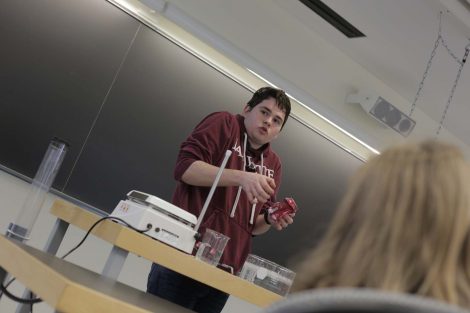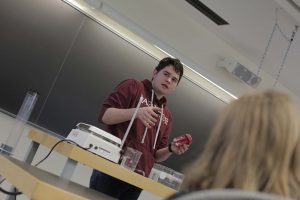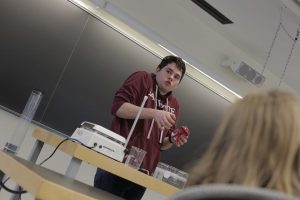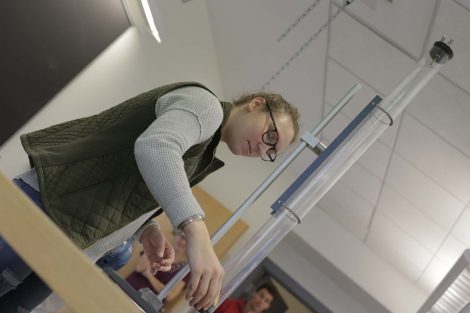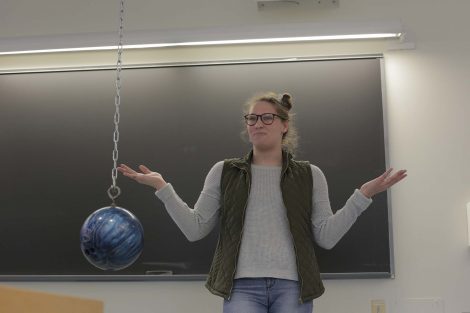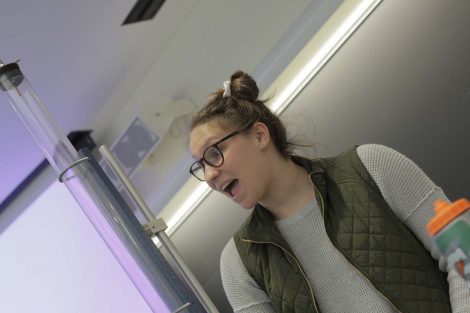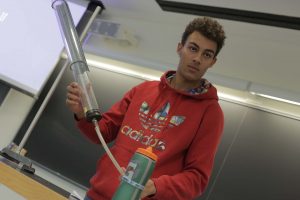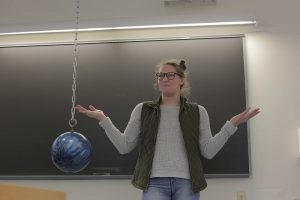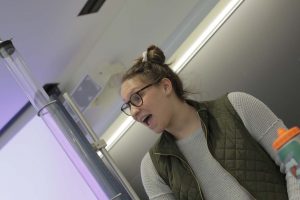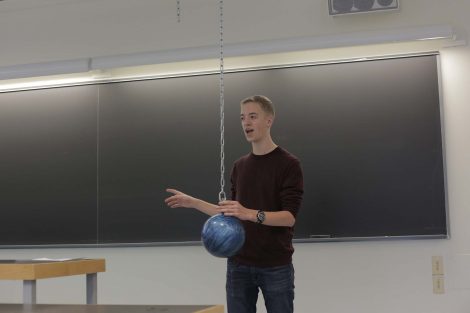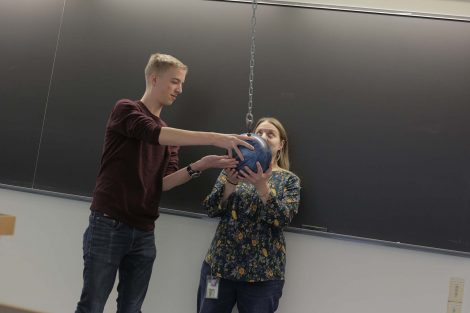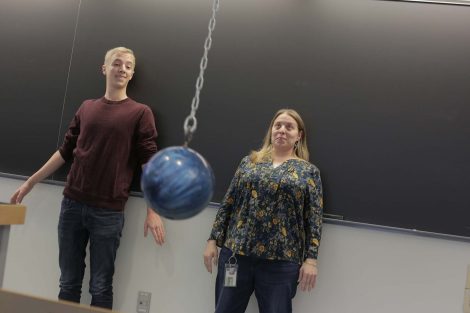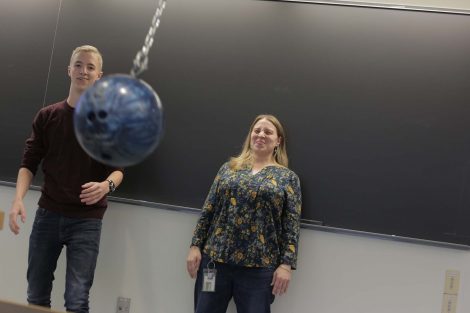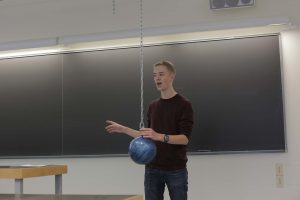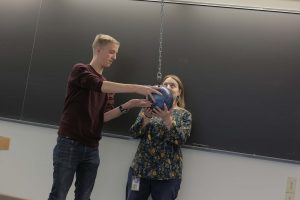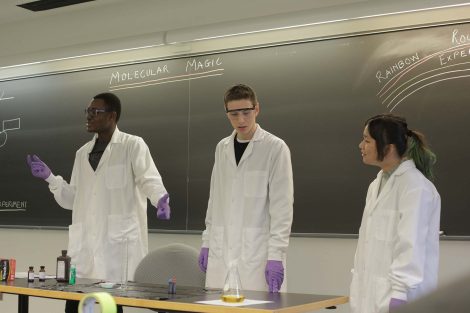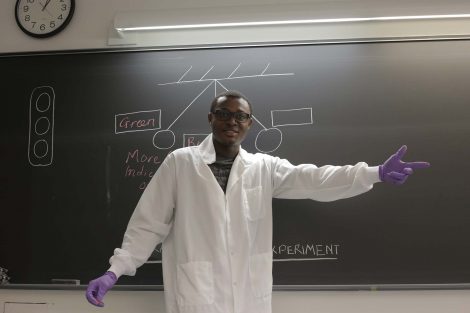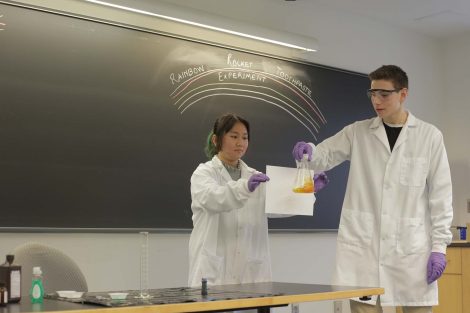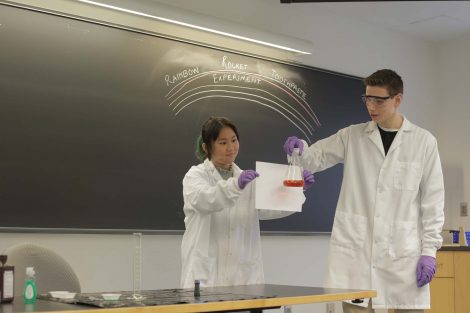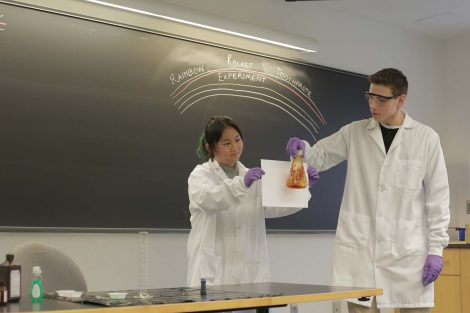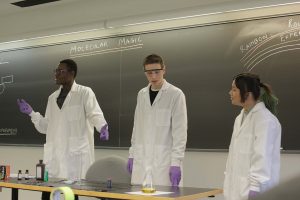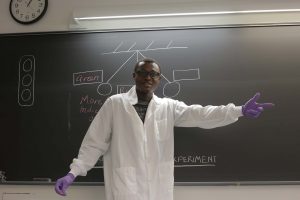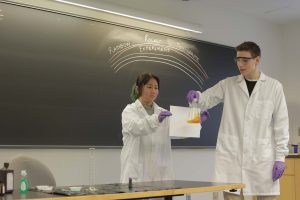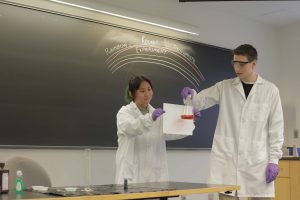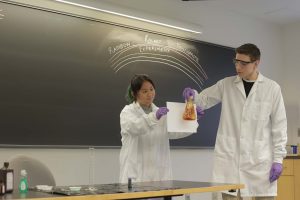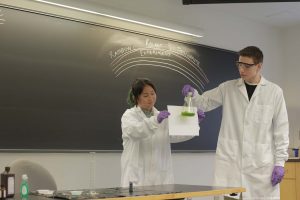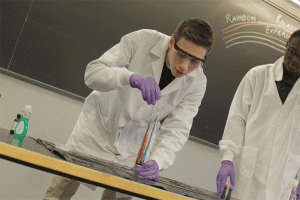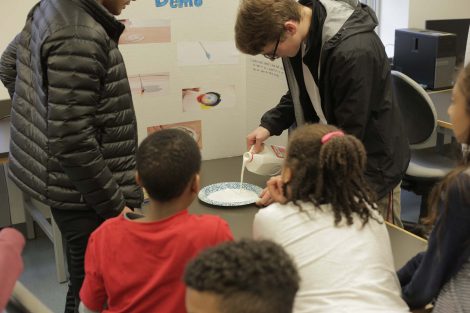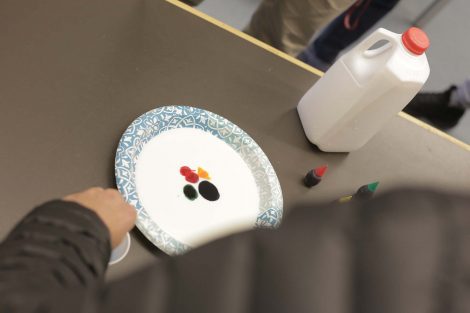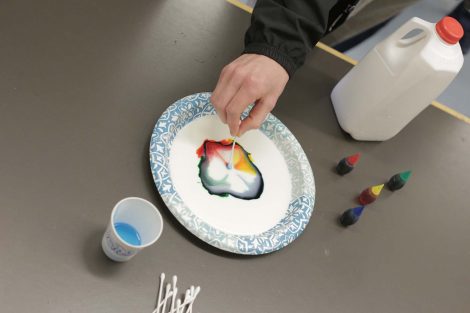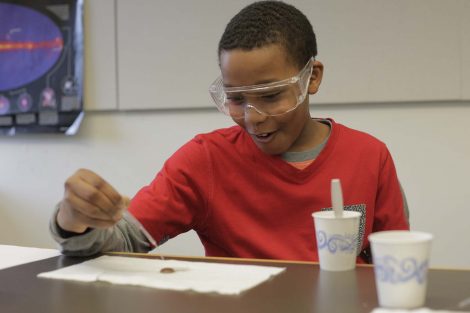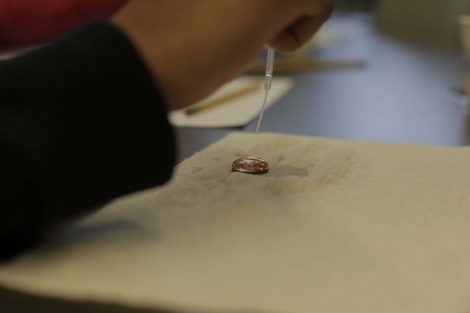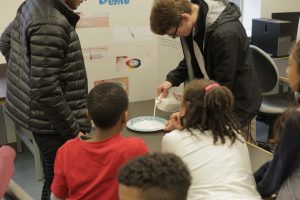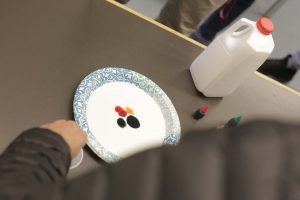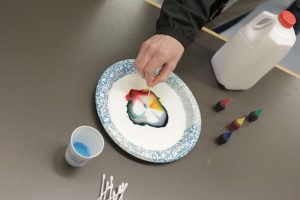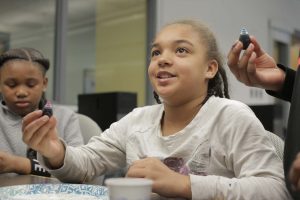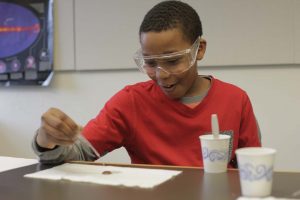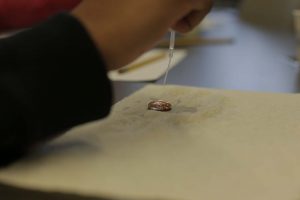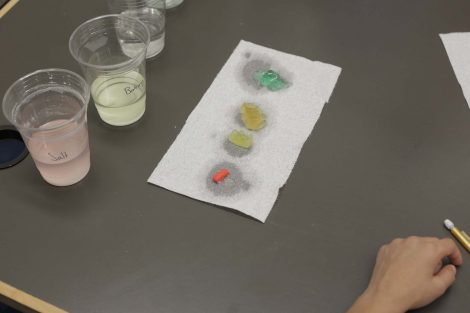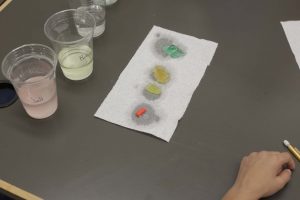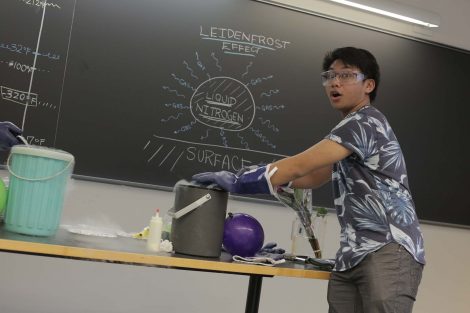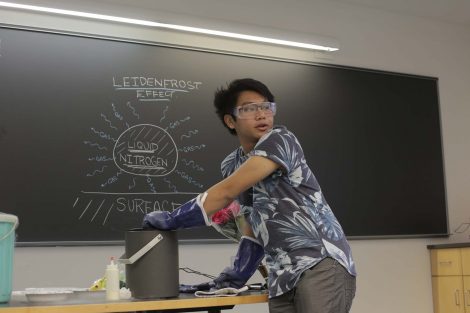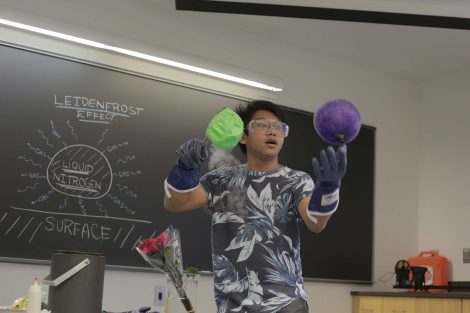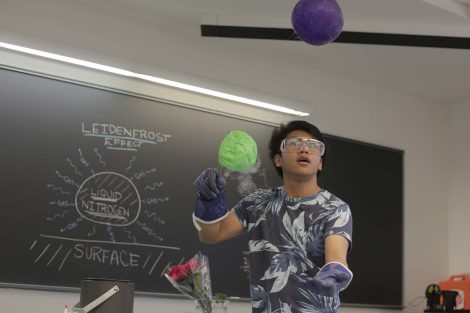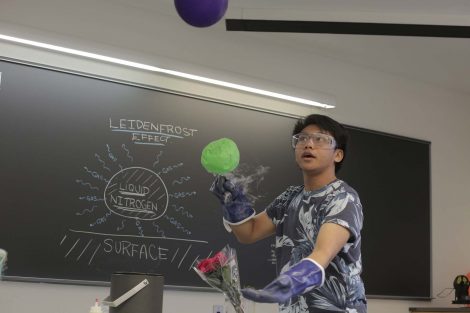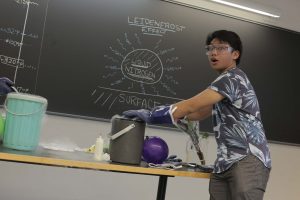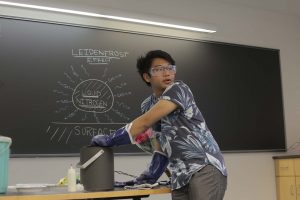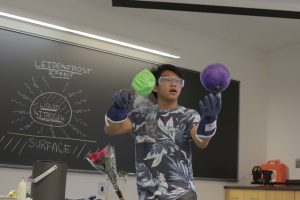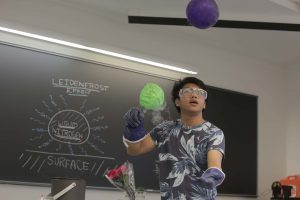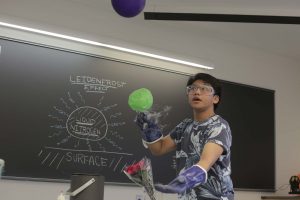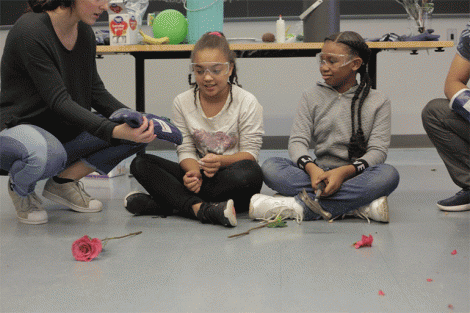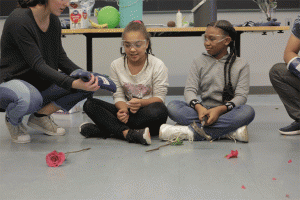Lafayette students engage local fifth-graders in science demonstrations
Story and photos by Stephen Wilson
A soda can dipped in ice water instantly crumples. Fifth-graders observing the demonstration gasp with shock. The student leading the experiment then explains how air pressure causes the can to buckle when conditions are just right (heated water inside the can meets ice cold water outside the can).
For the next hour, local elementary students watch various demonstrations as Lafayette students in Zoe Boekelheide’s First-Year Seminar (FYS) teach scientific topics.
The day was coordinated by the Landis Center for Community Engagement. As part of their Aspirations program, Cheston teachers partner with Lafayette faculty to create curriculum that challenges the College students to take what they are learning and translate it for younger students.
FYS courses are designed to introduce first-year students to intellectual inquiry by engaging them as thinkers, speakers, and writers. In Boekelheide’s seminar, students have explored how science demonstrations are used in lectures, museums, and television shows to explain principles and inspire wonder.
“Today is their chance to not just talk science, but to communicate it,” says Boekelheide, assistant professor of physics. “They can practice their presentation skills and make science more real.”
For fifth-grade teacher Krista Yetter, the day is about hands-on learning. “I want it to foster a love of science,” she says. “My students can do experiments here that aren’t possible in my classroom and truly see that what we are learning in an elementary class truly applies to everyday life.”
Everyday life is on-hand as the college student teachers use common household items to wow and educate their young assistants.
Here’s what they did.
Experiment: Gravity
Will a penny and feather fall at the same rate? Of course not. But what would happen if the same tube was devoid of air? Without air resistance, their gravitational acceleration is the same!
Experiment: Energy
Can a bowling ball swinging from a chain hit Mrs. Yetter in the face? While the potential is there, there is not enough kinetic energy to surpass the starting point. Again, air resistance has prevented certain harm.
Experiment: Color Magic
Can a yellow liquid in a narrow-mouthed flask change color when shaken? It can if that liquid contains indigo carmine, which changes from yellow to red to green as it is oxygenated with vigorous shaking.
Experiment: Rainbow Rocket Toothpaste
Common household items can turn into an explosive toothpaste. Take hydrogen peroxide and add soap and food coloring. To activate it, shake in a little potassium iodide. Viola! Time to board the rainbow rocket!
Experiment: Surface Tension
How many drops of water adhere to the surface of a penny before collapsing in a puddle? Ninety-two was the record that day. Surface tension science was then tested with milk. A few drops of food coloring puddle up on the surface of the milk until a cotton swab dipped in soap sends colors running.
Experiment: Gummy Bears
What happens to a tasty gummy bear after sitting in solutions of distilled water, salt water, vinegar, and baking soda? It all depends on the hypertonic and hypotonic properties. The hypertonic salt water contracts the gummies while hypotonic solutions cause the bears to swell and burst.
Experiment: Liquid Nitrogen
Freezing things at -320 degrees Fahrenheit, liquid nitrogen can constrict balloons and make roses and avocados so fragile that they shatter with a hammer. Or they can make Dippin’ Dots!

